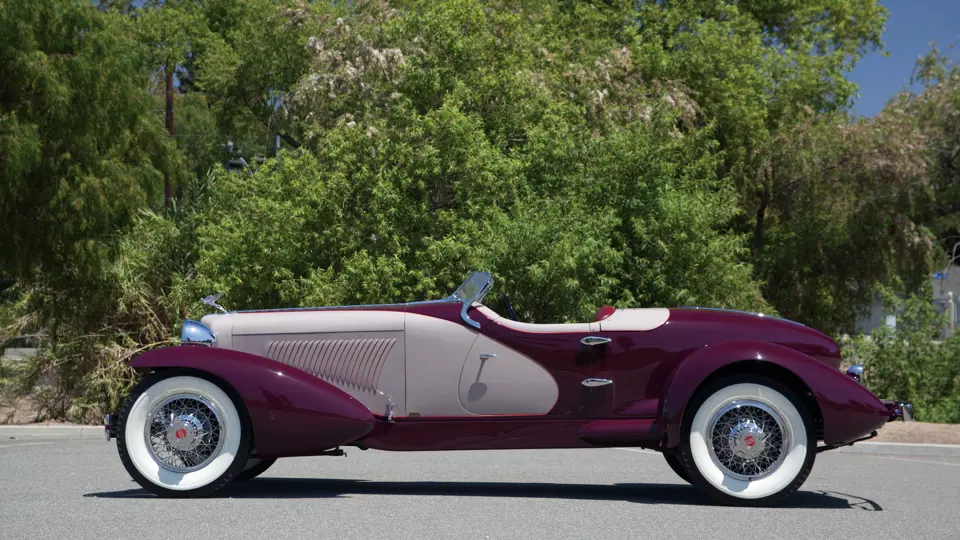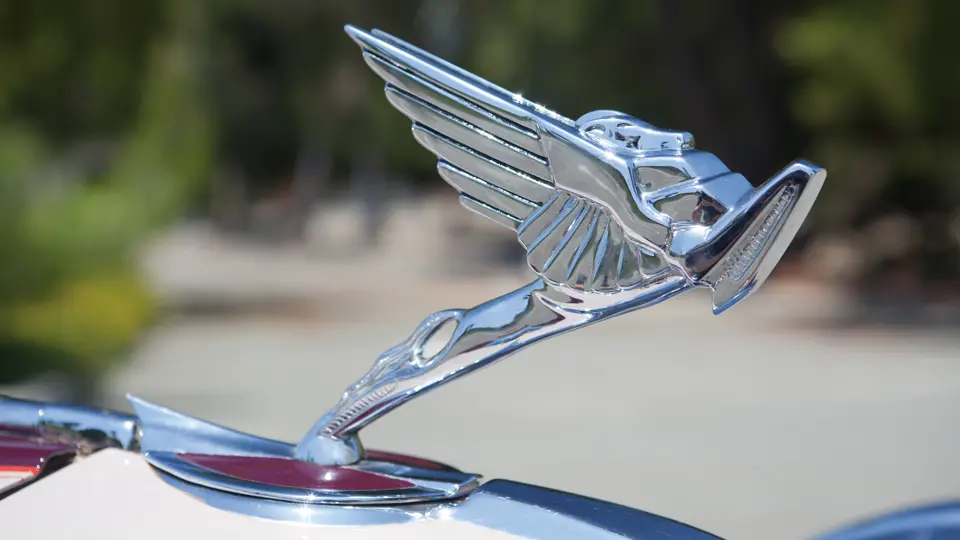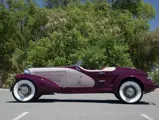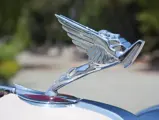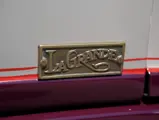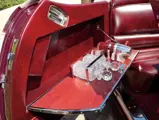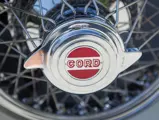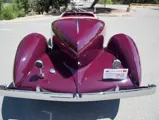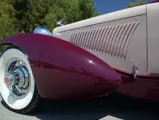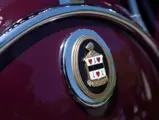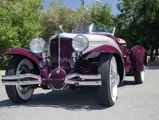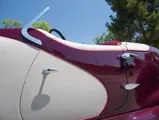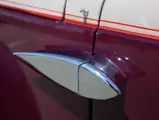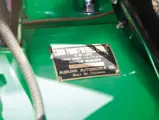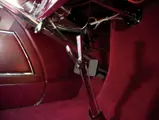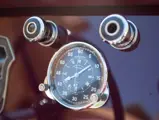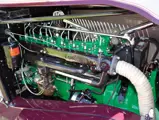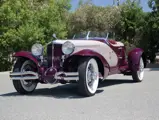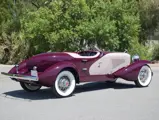125 bhp, 298.6 cu. in. L-head inline eight-cylinder engine, front-wheel drive, three-speed selective sliding-gear manual transmission, 3/4-floating front live rear axles with leaf-spring suspension, and four-wheel hydraulic drum brakes. Wheelbase: 137.5"
• An exhaustively researched recreation of the lost L-29 La Grande Speedster
• Completed by California’s Tyree Brothers in 2004
• Multiple show awards and profiled in several publications
Inspired by Cornelius Van Ranst and Tommy Milton’s front-drive, Miller-powered 1927 Indianapolis 500 car, the L-29 pushed the boundaries of automobile technology and was the first production vehicle with hydraulic brakes and automatic Bijur chassis lubrication. A potential disadvantage: the long drivetrain package necessitated by the L-29’s inline eight-cylinder and front-drive system, which became one of the model’s greatest assets when designer Al Leamy sketched one of the longest hoods ever seen.
Introduced in the summer of 1929, the breathtaking new L-29 was offered in a wide variety of factory bodies. Although the devastating stock-market crash of 1929 was just around the corner, L-29 production totaled 5,010 cars, versus Cord’s original sales projection of 5,000 units. American and European custom coachbuilders naturally gravitated to the design possibilities offered by the low slung L-29 chassis, and 43 custom-bodied L-29s were ultimately created. Just 12 are known to exist today.
Philip O. Wright, a young designer who had been working for the Walter M. Murphy Company in Pasadena, which was responsible for some of the sportiest Duesenberg Model Js ever created, presented his sleek boattail speedster design proposal for the Cord L-29 to Auburn President Roy Faulkner, who authorized construction. The coachwork was built by Union City Body Company, part of E.L. Cord’s growing industrial complex, and the car’s design elements included aircraft-inspired “pontoon” fenders, a steeply-raked vee’d windshield, and such wonderful details as streamlined, teardrop-shaped blisters covering the door hinges. Completed in time for its debut at the New York Auto Salon in late-1931, the car was introduced as the La Grande Speedster.
Following the New York Salon, the La Grande Speedster was shown in Toronto, Canada and then at Cord dealerships throughout North America. Next, it was refreshed at the factory in Auburn, Indiana. Its slim Woodlite headlights, which were illegal in Europe, were replaced by standard, round headlights. It then departed for France, where it appeared with actress Suzy Vincent at the Paris Concours d’Elegance and achieved First Place, repeating the success of Count Alexis de Sakhnoffsky and his Hayes-bodied L-29 the prior year. At some point, an unproven but persistent connection between the La Grande Speedster and MGM movie producer Paul Bern, Jean Harlow’s husband, appeared. Equally mysterious, the La Grande Speedster disappeared in Europe and despite the best efforts of collectors, historians, restorers, and dealers over the intervening years, not the slightest hint of its fate has yet surfaced. Only one Cord L-29 was bodied with the Philip Wright’s dramatic La Grande Speedster coachwork. Lost in the mists of history, the La Grande Speedster is believed to have been lost during WWII, and today, it remains one of the true enigmas of the classic-car world.
That is, until Arnie Addison came along in 1995 and decided to make the dimly-remembered and long-sought Cord L-29 Front-Drive La Grande Speedster dream car a reality. Mr. Addison sought out every report and photo available and took them, along with an original L-29 chassis, engine, and drivetrain, to Greg and Jeff Tyree in Turlock, California. Guided by publicity photos published by the factory and made available by the ACD Museum, the Tyrees meticulously recreated the La Grande Speedster in every detail, and the chassis, grille, and front bumper were refurbished to exact factory specifications. Mr. Addison’s search for authenticity included locating an ACD Club member, Bill Kinsman, who had seen the Speedster at the 1931 New York Auto Salon and recalled its original colors of Royal Cranberry and Cashmere Cream.
Consuming some 20,000 person-hours of research and work, the Tyrees’ restoration project included many intricate and unique details that had to be re-created to meet Mr. Addison’s insistence on accuracy. These included a cigar rack hidden in the driver’s door and a bar set including two decanters in a similar compartment in the passenger door. The leather upholstery and dash were reproduced using the aforementioned factory photographs, and this car’s special dashboard knobs were modeled after those of the de Sakhnoffsky-designed L-29 Hayes Coupe. The car’s unique radiator ornament was created by a third Tyree brother, Mark, a sculptor. The “flathead” Lycoming straight-eight engine was lavishly detailed and painted Duesenberg Green. The dashboard was fitted with a reproduction Duesenberg-type altimeter and chronometer, as used by the original car. A working convertible top was meticulously constructed and then carefully fitted to fully disappear under a metal cover behind the seats. The windshield, door hardware, handles, and exterior door hinges were custom-designed only for this vehicle and were faithfully reproduced.
The nearly decade-long process was completed in 2004. The beautifully recreated La Grande Speedster enjoyed great success that year. It was displayed at such venues as Meadowbrook, Silverado, Art Center, Palo Alto, and the Auburn-Cord-Duesenberg Festival. At Silverado, the La Grande earned the Blue Ribbon and Most Popular Car awards, and it was judged by Cord experts as a 398 out of 400 points. In early 2007, it joined the collection of renowned collector John O’Quinn, until being acquired by the current owners.
The speedster has been featured in several prestigious national magazines, including the Robb Report Collection, the Auburn Cord Duesenberg Club Newsletter, and Hemmings Classic Car. In the July 2005 issue of Automobile magazine, renowned designer Robert Cumberford observed, “Always skeptical about re-creations, I was particularly severe in my analysis of form and line, and I compared early photographs with the car from the same angles. To me, this is the La Grande, down to the last curve and detail.” That is high praise indeed, from a demanding critic of design and execution.
As offered, the Cord L-29 Front Drive La Grande Speedster is a magnificent, compulsively accurate, and meticulously detailed re-creation of the long-lost coachbuilt Cord. Constructed by artisans and based on wide-ranging and painstakingly careful research, it is as correct and accurate as humanly possible. Built to the highest standards of fit, finish, and function, this L-29 Speedster is a reminder of the talent, creativity, and foresight of E.L. Cord and the team he built in Auburn, Indiana.




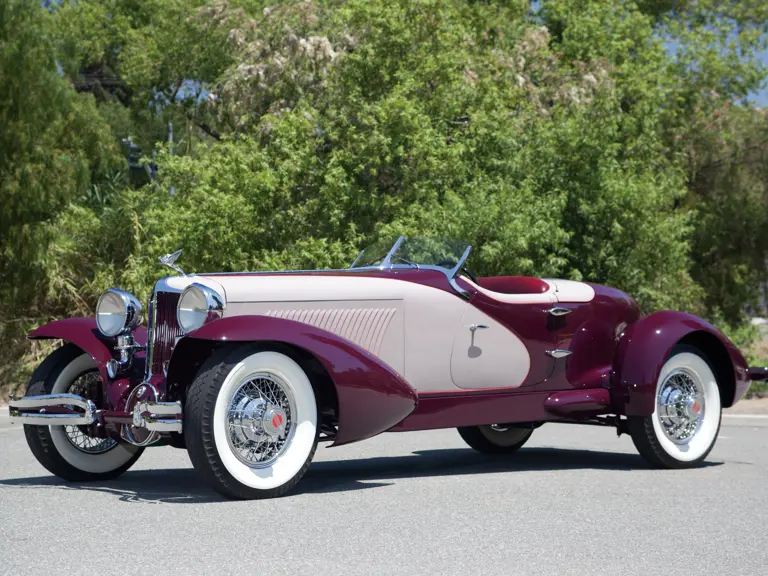
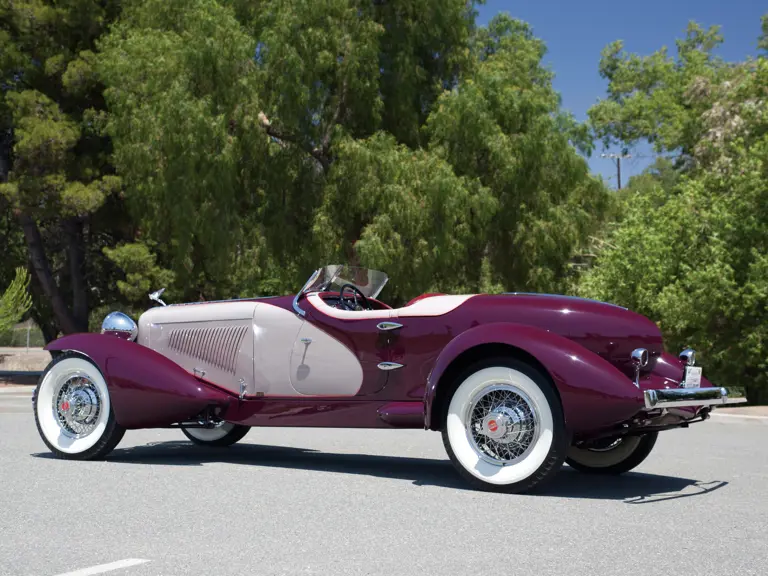

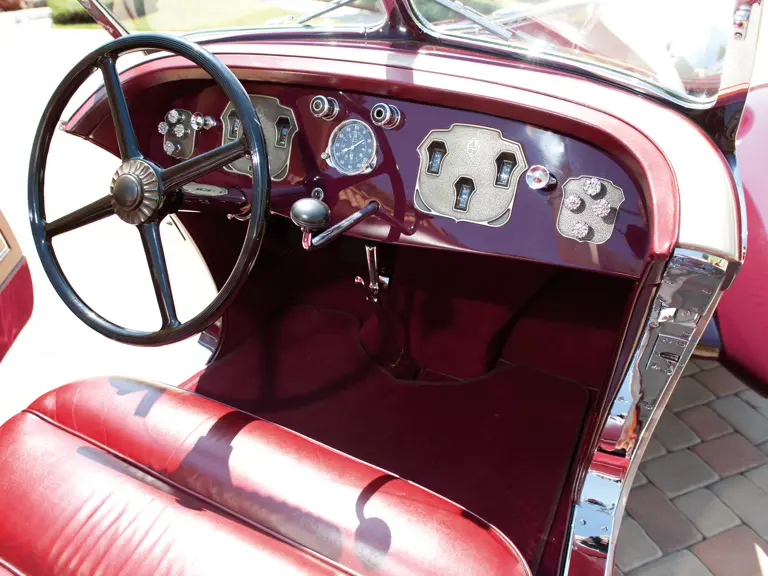

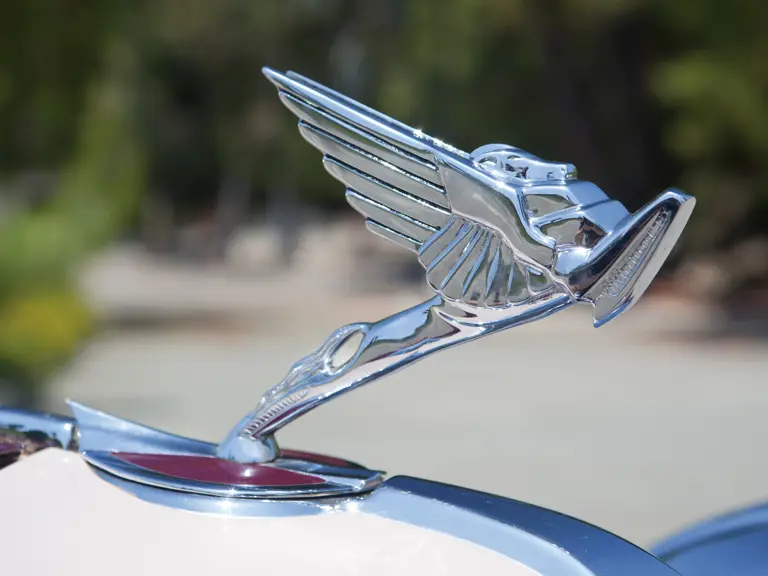

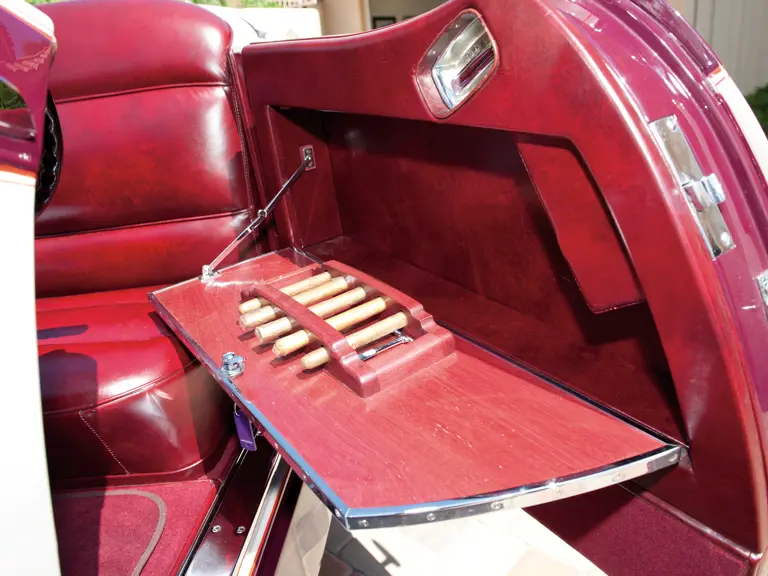
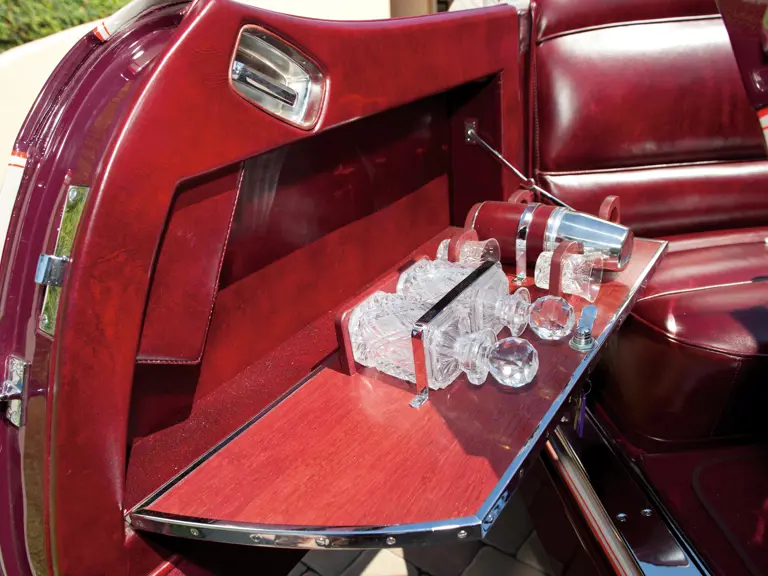

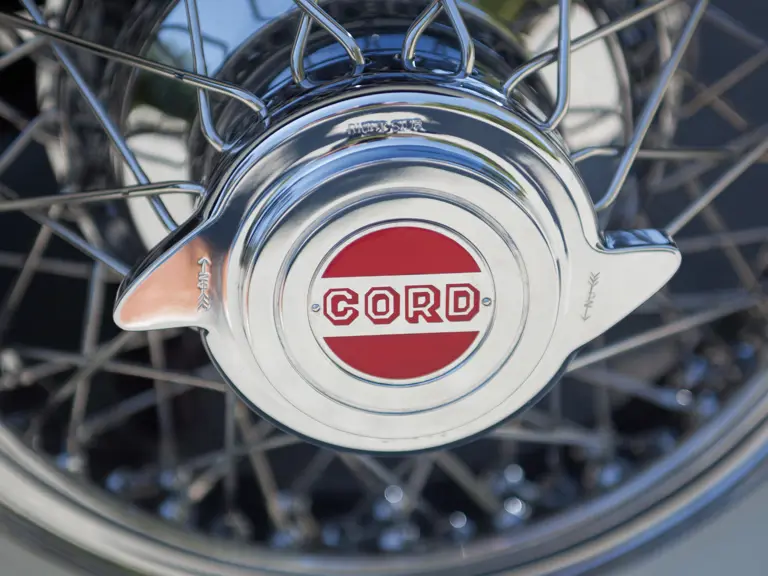

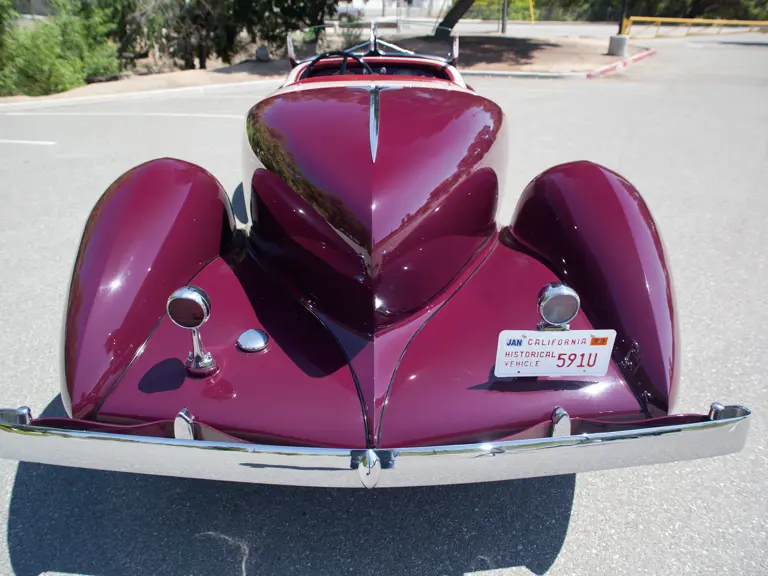
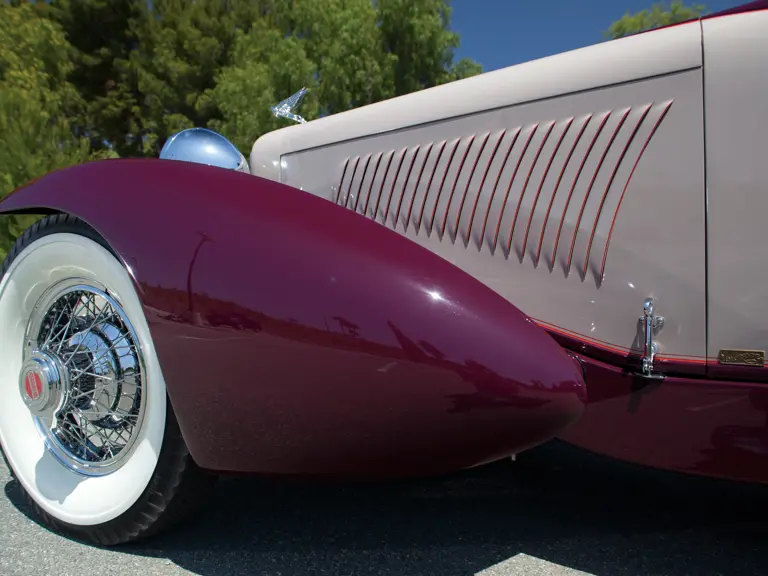




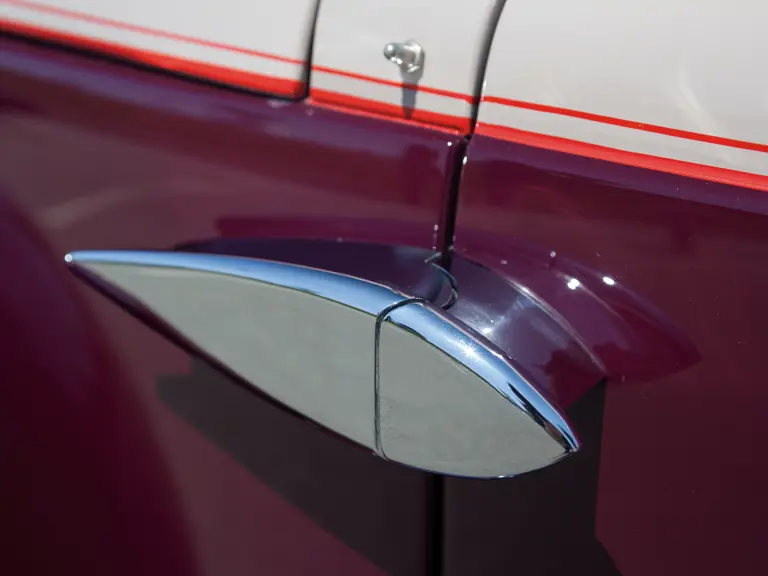
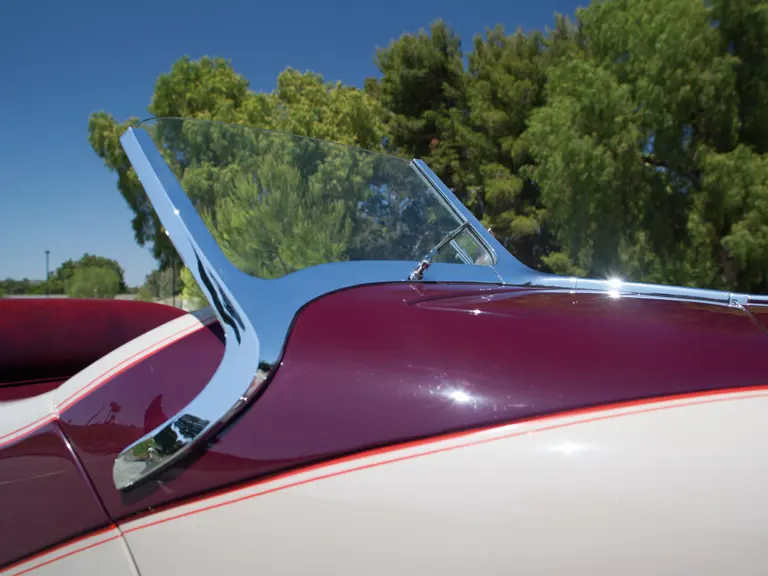
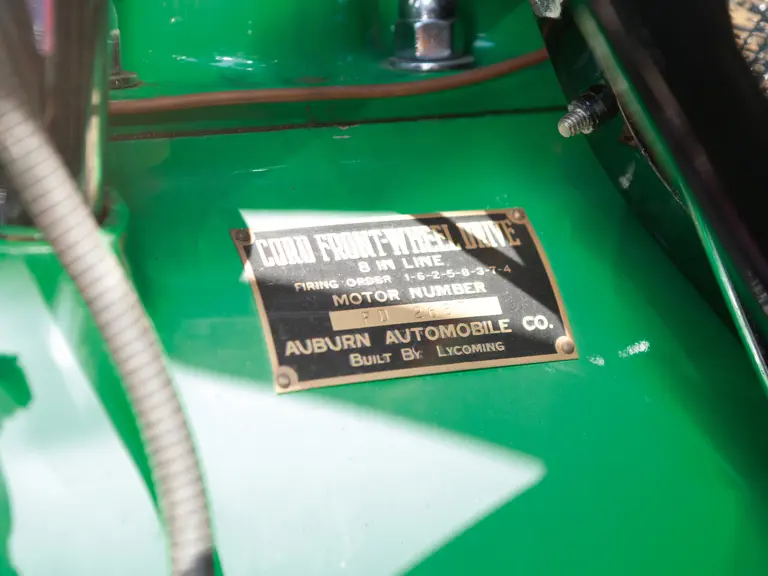

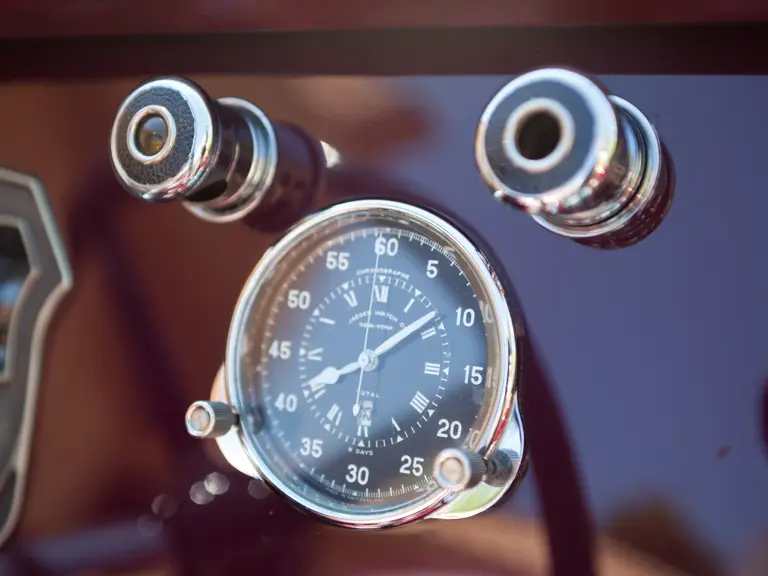
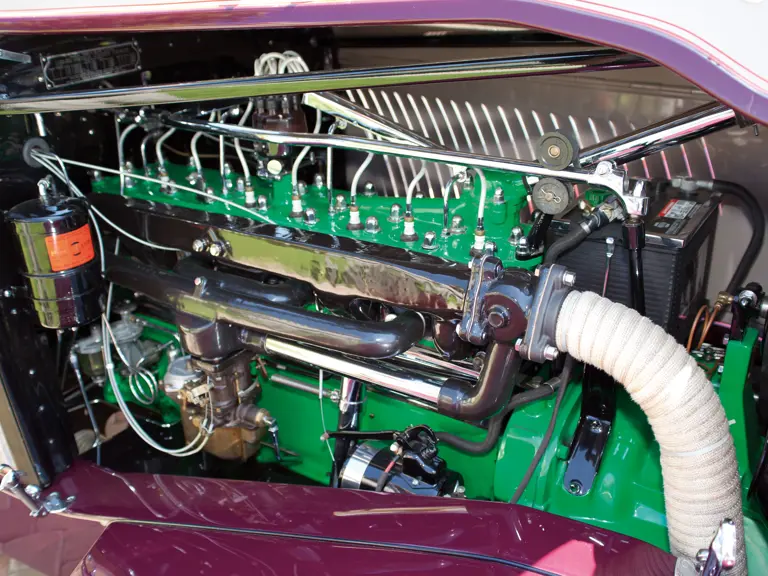
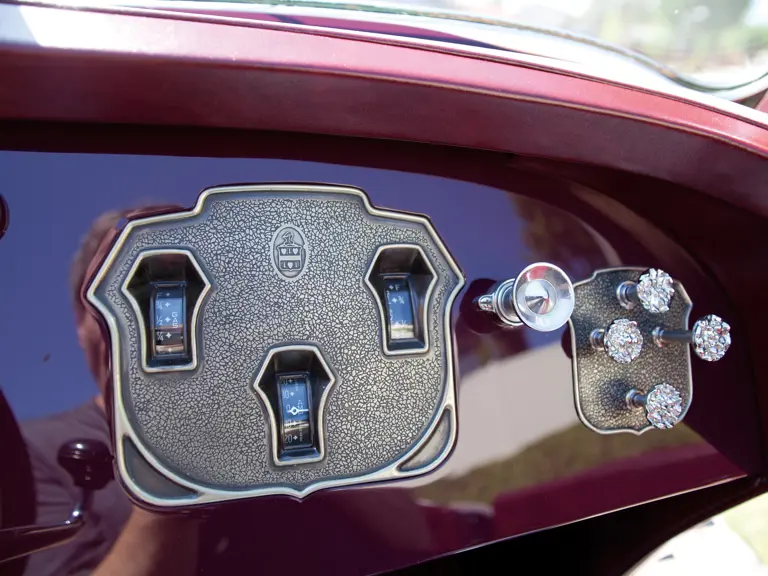

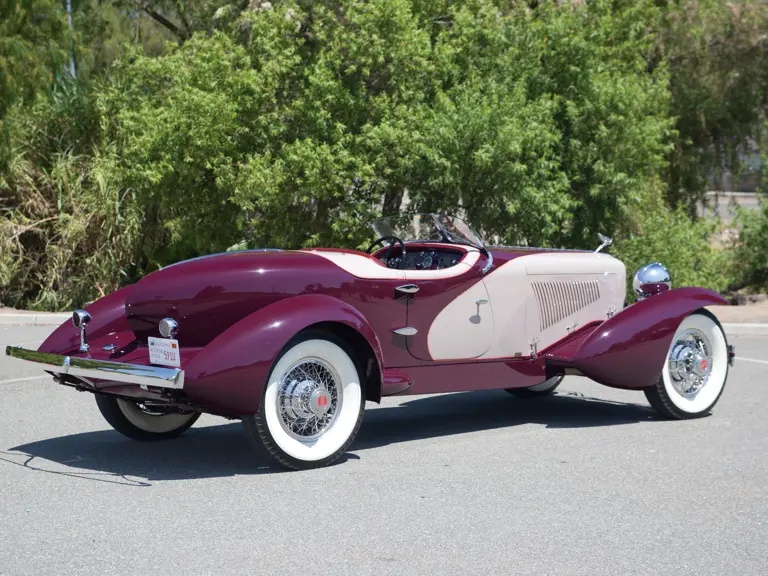
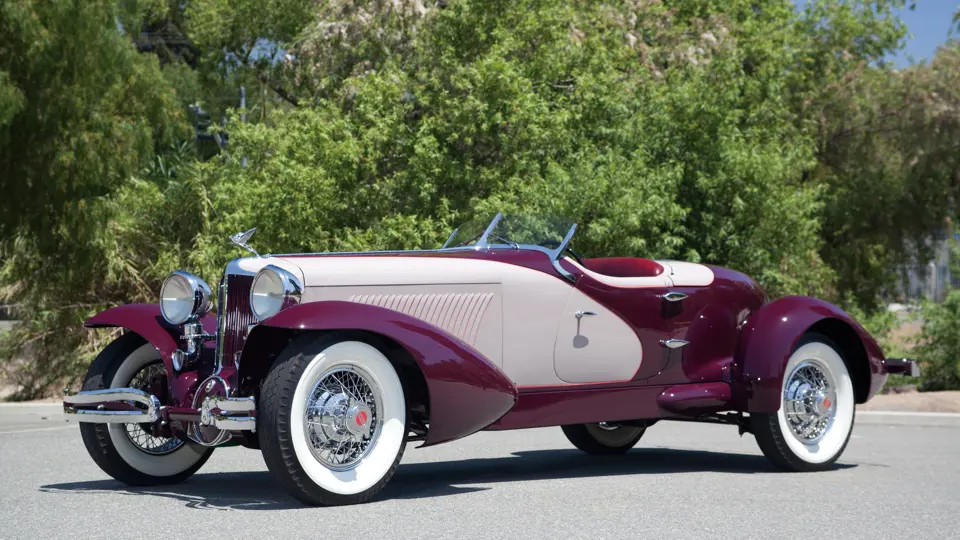
 | Plymouth, Michigan
| Plymouth, Michigan
